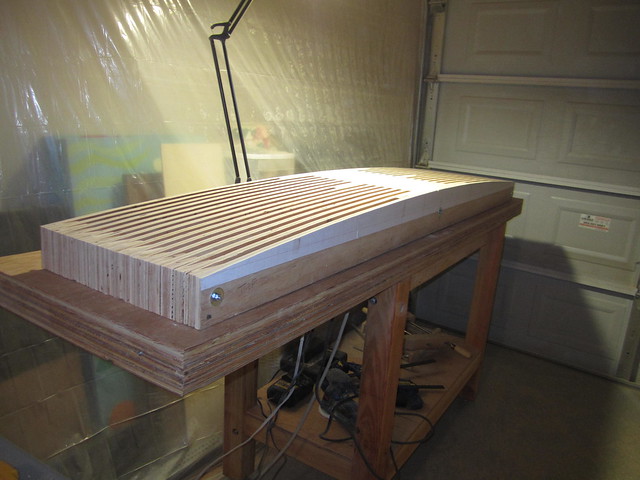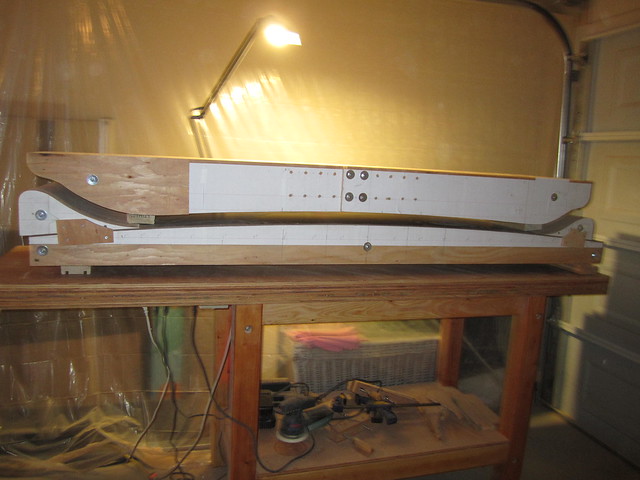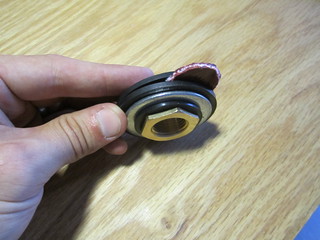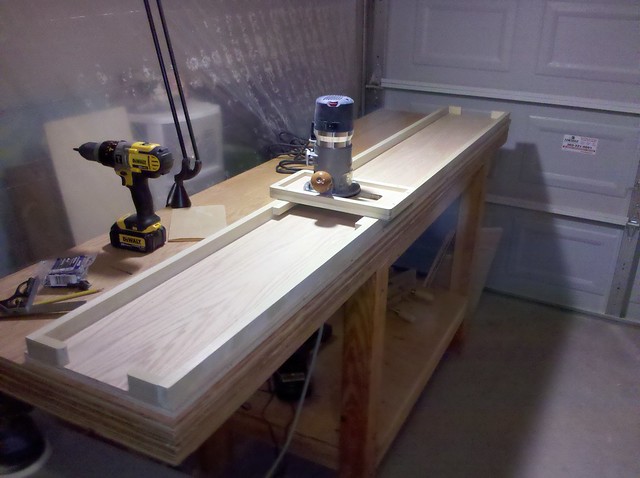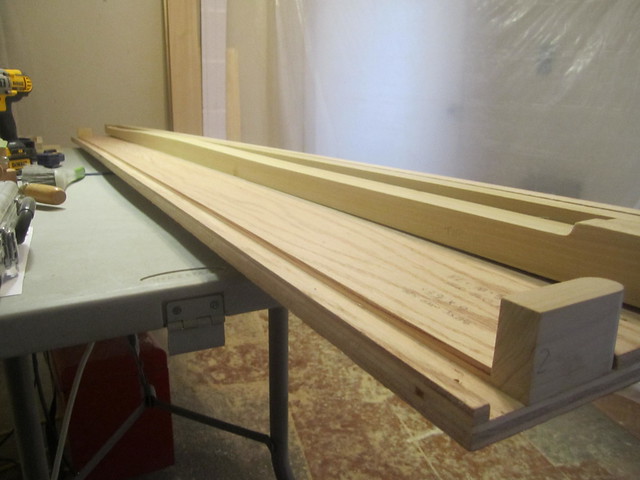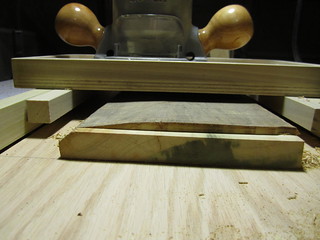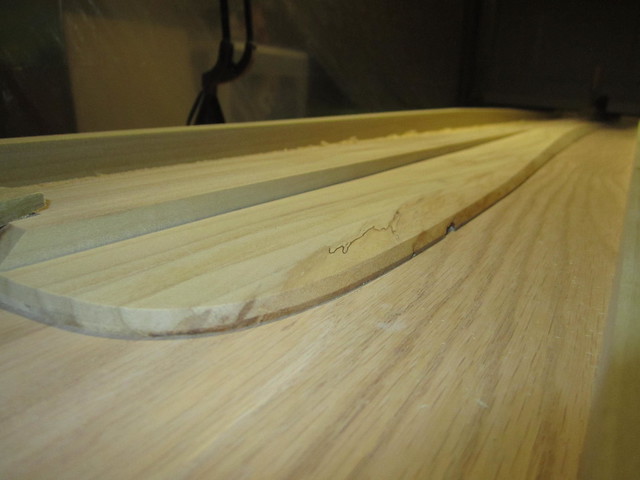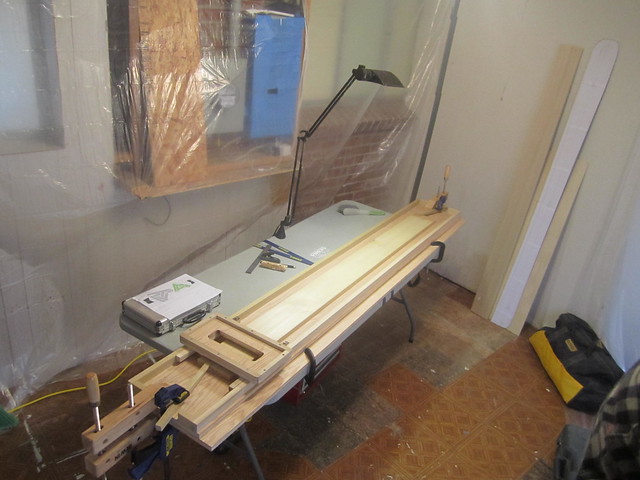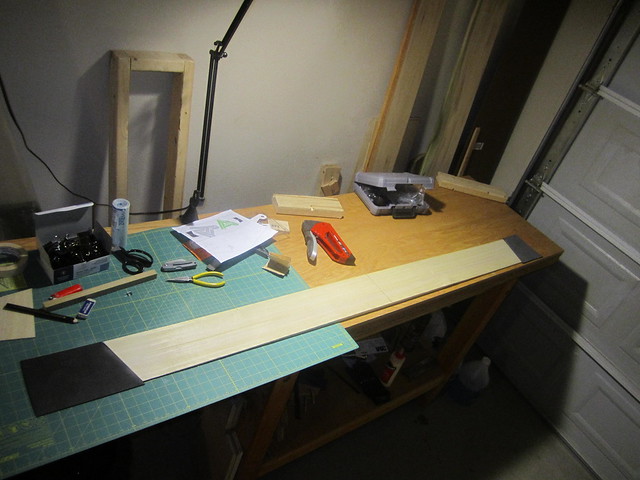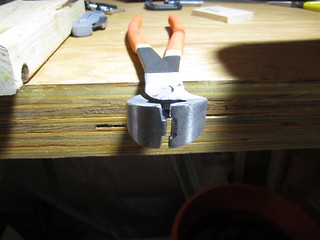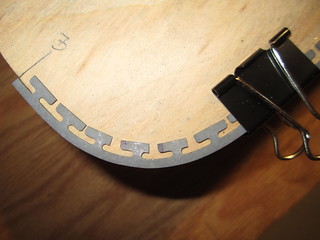Press:
As I mentioned before, the press needs to start out its life has a hydraulic clamp press due to limitations with my work-space.
The press utilizes 12 clamps, which each consist of 4x4 lumber and 1/2 all-thread rods. The rod I'm using is rated for 5000lbs. The 4x4's would be the first thing to fail in this design, and they give convenient warning noises if I approach their limit. I was very nervous about the press and did lots of cautious testing.
This brings up my single favorite aspect of hydraulic pressure vs. pneumatic: In being cautious about the safety of the design, I was very nervous about a wooden pneumatic press (and I would continue to advise anyone against it).
- Since air is compressible, when the volume of the chamber (bladder) changes, it will expand and lose some pressure, but retain much of it. In addition - if the compressor was running it would work to bring the pressure back up. In a design like mine, this would mean that if one clamp failed, the remained clamps would still have a job to do, and with each failure, the force on the remaining clamps would actually increase, instead of dissipating. This would be a dangerous chain reaction which could send failed clamps shooting off. Not Good....
- Hydraulics are non-compressible (water is near enough for this argument). This means that huge changes in pressure will occur with almost no change in volume. When this property is applied to a clamp style press, the safety of the press does a complete turn around vs. compressed air. As soon as one of my clamps even *started* to fail, the relief in force and tiny change in volume would drastically decrease the pressure. Since no pump is utilized, the pressure is not restored by the system, so pressure immediately drops at the first signs of failure, thus saving the press and not sending parts flying.
I won't dispute the advantages of a pneumatic press. It is my goal to build one eventually. They are very efficient, and would greatly increase production capabilities. My current press takes nearly 15 minutes to assemble and crank up to pressure once the ski layup is inside... There are many many disadvantages to my current press....
However, for someone without a strong (read: safe) steel structure to contain the forces of a normal pneumatic press, and without electricity or running a pump, I think this is a valid option and is working well for me.
Beginning of press assembly:

Press assembled and at pressure:

Pressure holding at ~33psi:
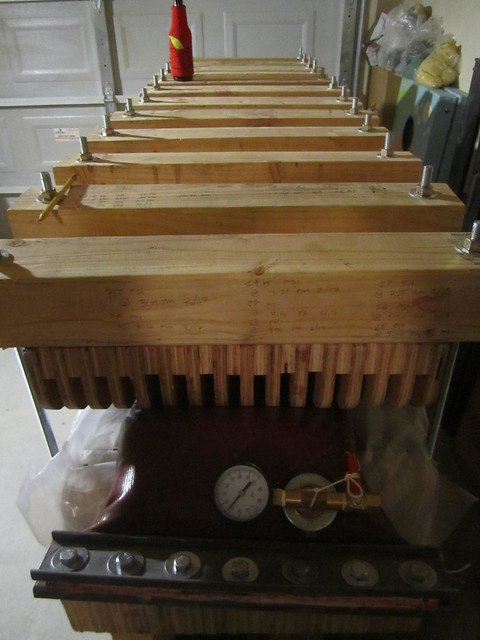
The pressure gauge allows easy reference on how tightly I need to crank down the nuts. It is a hassle to have to assemble/disassemble so much each time I press, but it works great for not requiring any power, and meets my goal of keeping as many parts transferable into a pneumatic press as possible for down the road.




